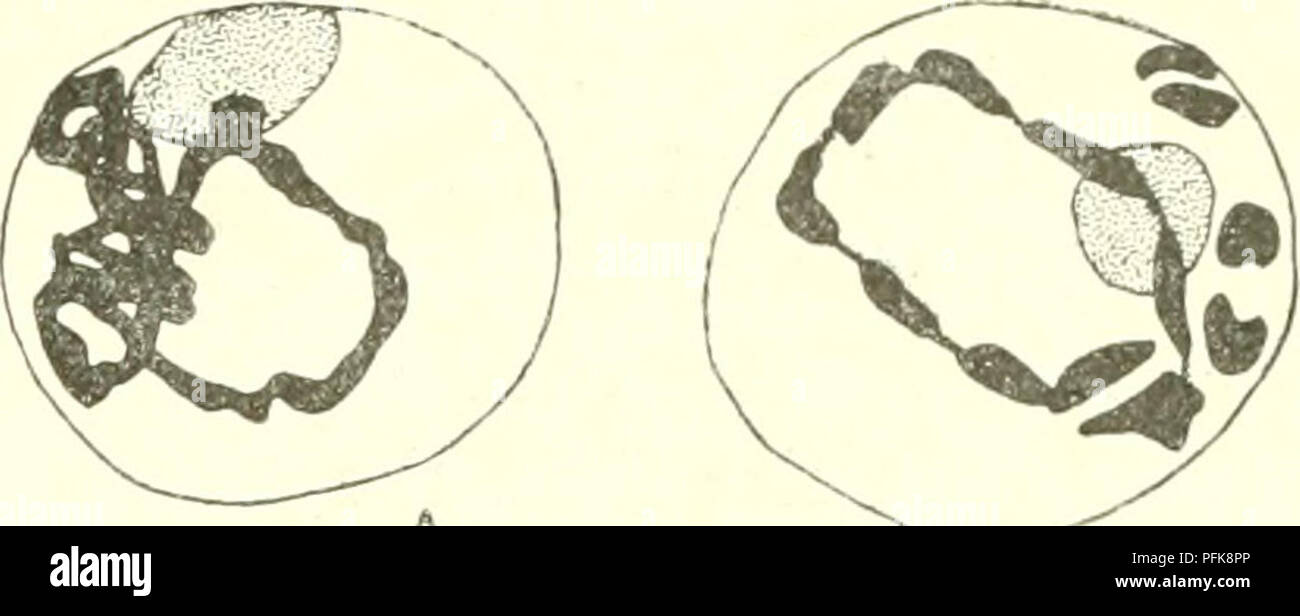. Cytology, with special reference to the metazoan nucleus. Cells; Cytology. I MITOSIS 9 condensation ultimately form the relatively short and thick chromosomes of the later stages. Karyosomes, if present, since they are composed of chromatin, disappear, being used up with the rest of the chromatin in the formation of the chromosomes. If plasmosomes are present, they dis- appear either before or after the disappearance of the nuclear membrane (see below), apparently without participating in the formation of the chromosomes or playing any further part in the Hfe-history of the nucleus. For some

Image details
Contributor:
Central Historic Books / Alamy Stock PhotoImage ID:
PFK8PPFile size:
7.2 MB (152.6 KB Compressed download)Releases:
Model - no | Property - noDo I need a release?Dimensions:
2485 x 1006 px | 21 x 8.5 cm | 8.3 x 3.4 inches | 300dpiMore information:
This image is a public domain image, which means either that copyright has expired in the image or the copyright holder has waived their copyright. Alamy charges you a fee for access to the high resolution copy of the image.
This image could have imperfections as it’s either historical or reportage.
. Cytology, with special reference to the metazoan nucleus. Cells; Cytology. I MITOSIS 9 condensation ultimately form the relatively short and thick chromosomes of the later stages. Karyosomes, if present, since they are composed of chromatin, disappear, being used up with the rest of the chromatin in the formation of the chromosomes. If plasmosomes are present, they dis- appear either before or after the disappearance of the nuclear membrane (see below), apparently without participating in the formation of the chromosomes or playing any further part in the Hfe-history of the nucleus. For some time after the thread formation, which starts in the early- prophase, has proceeded or even been completed (by conversion of the entire chromatin content of the nucleus into filaments), the length of the threads is far greater than the circumference of the nucleus (Figs. 3, 6, 7, 8), and hence the nucleus is filled with a complicated tangle—the spireme of Flemming—in which it is impossible to discern how many separate filaments are present. There may indeed be no apparent breaks in the thread, and when such do appear it is often difficult to determine whether they are real interruptions of continuity, or merely the optical effects of a sharp angle in the thread, etc. This gave rise to the old view that in the early prophase there is but a single greatly convoluted thread present, and so this stage was known as ^ the continuous or unsegmented Fig. 5. Spiyeme, in COntra-distinction to Meoiic^xoph?i%e(i)m Oenothera nibrmemsshowms, . cohering chromosomes. (Gates, Botanical Gazette, 1908.) the segmented spireme of the .A, uncut nucleus showing single thick spireme; B, later . stage showing the spireme segmenting into chromosomes. later prophase, m which a num- ber of separate threads is plainly present. However, careful examina- tion, and especially comparison with forms in which the nuclei are poorer in chromatin and the prophase filaments consequently less voluminous, has led